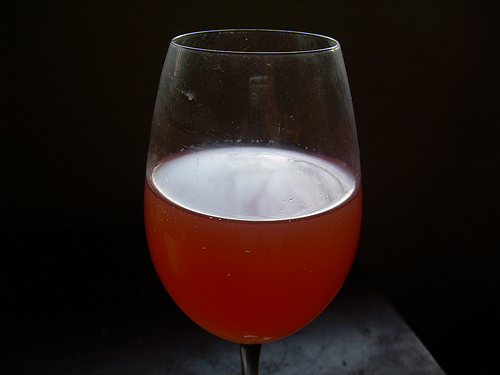Posts Tagged ‘Array’
Honey Bee Crisis = Food Crisis

Over the last three years more than one in three honey bee colonies has died nationwide, posing a serious risk to our natural food supply. One cause for the losses is a phenomenon called Colony Collapse Disorder, or “CCD.” When a hive experiences CCD, honey bees mysteriously abandon their hive and die. Researchers don’t know exactly what causes CCD, but believe some contributing factors may be viruses, mites, chemical exposure and poor nutrition.
Why is this a crisis? Because, honey bees are responsible for pollinating one-third of our country’s natural foods. Think about it…one out of every three bites of food an average American eats has been pollinated by a honey bee. These industrious workers are responsible for pollinating more than 100 different varieties of fruits, vegetables, nuts and seeds, and they provide 80 percent of the country’s pollination services. The honey bee is responsible for $15 billion in U.S. agricultural crops each year because they fly up to 15 miles per hour and visit about 50 to 100 flowers on each pollination trip. It takes 2 million flower visits, covering 55,000 miles to make one pound of honey. When a honey bee returns to the hive after finding a good pollen source, it gives out samples of the flower’s nectar to its hive mates and performs a dance that details the distance, direction, quality and quantity of the food supply. The richer the food source, the longer and more vigorous the dance.
What can homesteaders do to preserve the hum of honey bees and thereby help sustain their own gardens and production? Plant a seed! It’s that simple. Read the rest of the story »
Sodium Nitrite – What Is It?

Since the 1960s sodium nitrite has been used as a preservative in smoked meats, hot dogs, bacon, ham and sausages. Many think you should proceed with caution with foods containing sodium nitrite, but What Is It?
Sodium nitrite, a cousin to sodium nitrate, is a preservative that gives cured meats their distinctive flavor and reddish color. It also helps prevent the bacteria that causes botulism, but consumer beware. When sodium nitrite is combined with high heat it can produce a cancer-causing compound. Some researchers claim to have found a way to prevent the compound from forming, but not everyone finds truth in the claim.
What is true is that sodium nitrite tends to be used in the processing of meat products that have limited nutritional value. Oh, you can go ahead and have that hot dog or crispy bacon, but why not make it organic, better yet make it homemade and home cured. That why you know exactly what you’re eating.
![]() photo credit: Health Tech Mall
photo credit: Health Tech Mall
Making Homemade Mead—It’s a Honey of a Drink
Mead is an alcoholic beverage made by fermenting honey and water, sometimes with fruit and spices added as flavorings. Contrary to popular belief, Mead is not simply a sweet wine produced from honey. Mead can be dry, semi-sweet, sweet or include other fruits. It can be as varied as the honey from which it is made.
By varying the proportions of honey and water and the point at which fermentation is stopped, a wide variety of types can be produced ranging from a very dry and light, to sweet and heavily bodied. If fermentation is left to continue while bottled, sparkling mead resembling a sparkling white wine or champagne can be produced.
The main ingredient of any mead is honey. Both the flavor and the color of the honey depend on the variety of the flower that the nectar comes from. Clover honey is light in color and mild, while honey from buckwheat is much darker and stronger. Honey is rich in simple sugars; dextrose and levulose and contains more calories than ordinary sugar in addition to sodium, iron and potassium levels that make it ideal for fermentation.
Honey is probably mans oldest sweet food. In many early civilizations it was celebrated as food for the Gods, as a gift from the Gods or as a giver of immortality. The Egyptians, Greeks, Romans, and other ancient peoples used honey in making cakes and candies as well as beverages. It was also used to make salted meat more palatable, hence “honey hams”. Wherever there was a large orchard there was sure to be an apiary. It was very common for households to have a small orchard as well as a small apiary, or for locals to come together and contribute the honey that had been gathered over the summer to a brewer who could make mead for them.
Until the late middle-ages both meads and sparkling meads were highly popular beverages, especially in northern regions of Europe, where wine grapes could not easily be grown. As the importance of honey was displaced by less expensive sugars in the late Middle Ages, mead was gradually displaced by less costly beers and ales and to a lesser degree by imported wines. Nonetheless, it was always considered for medicinal value and was prescribed to even royalty.
FUN FACTS: The term ‘Honeymoon’ comes from the common practice of drinking honey wine for a full cycle of the moon during medieval times. Mead was considered an aphrodisiac and the newly married couple drank mead for the first month of their marriage to ensure that the union would be a fruitful one.
Tip your glass to the New Year folks, and try your hand at making your own batch of Mead.
To learn how check out these informative sites for directions and supplies:
http://makemead.net/easy-bread-yeast-mead-recipe.aspx
http://www.midwestsupplies.com/
![]() photo credit: di.wineanddine
photo credit: di.wineanddine

Recent comments
Aenean nonummy hendrerit mauris. Phasellus porta.